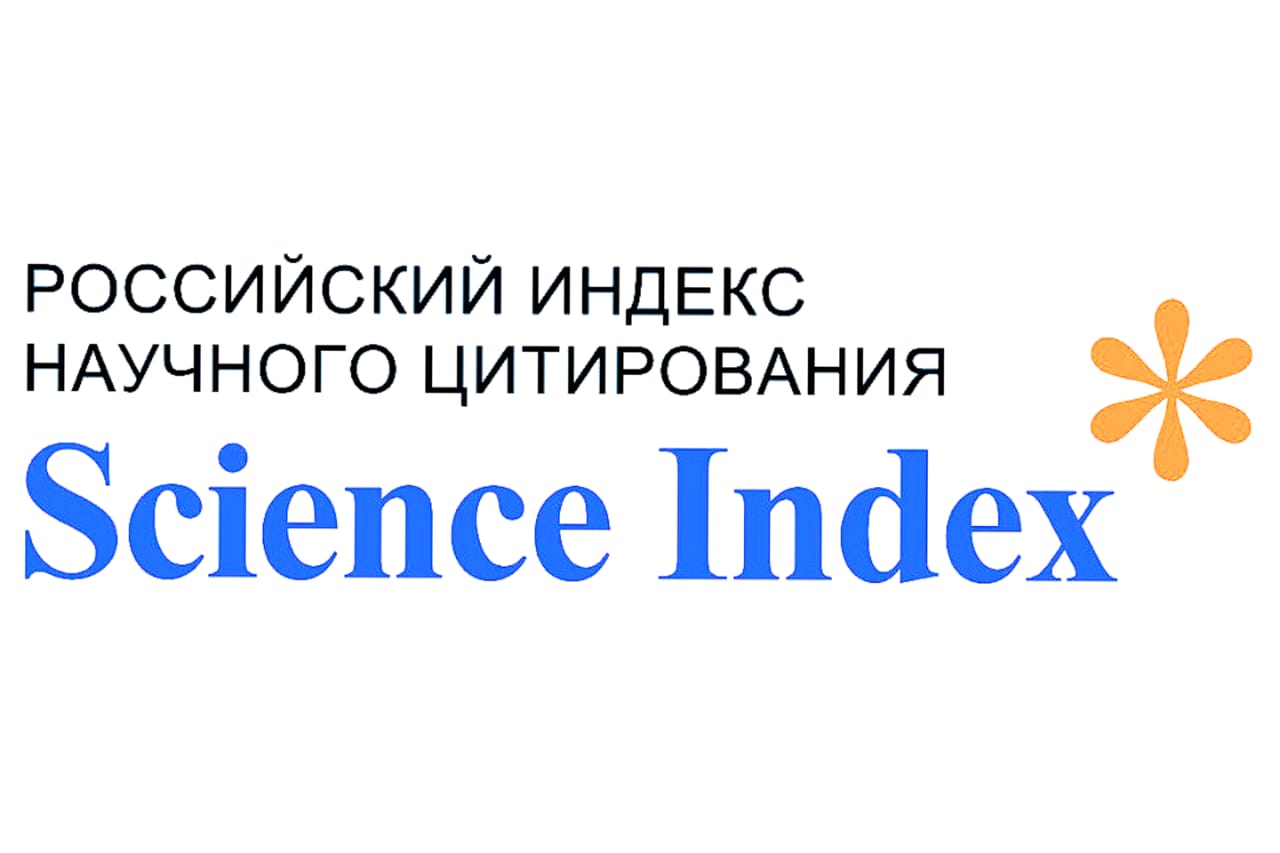Development of recombinant yeast strains for production of bioethanol from cellulosic feedstock
Keywords:
Saccharomyces cerevisiae, cellobiohydrolase, β-glycosidase, endo-1, 4-β-glucanase, signal peptide of yeast α-factor, genomic integration.Abstract
Biodegradation of the cellulose with the formation of soluble sugars is catalyzed by specific multi-enzyme cellulase system composed of endo-β-1,4-glucanase, exo-1,4-β-glucanase (cellobiohydrolase), exo-1,4-β-glucosidase. Properties of individual enzymes and their interactions in these cellulase complexes determine the efficiency of the hydrolytic degradation of cellulose substrates to soluble oligomeric and monomeric sugars. Glucose and other sugars produced by enzymatic hydrolysis of lignocellulosic biomass can be further converted by certain microorganisms into bioethanol and/or biobutanol.
By means of gene engineering approaches the pHO-GAPDH-eng1-GAPDH-α-cel7A-myc-6xHis-GAPDH-α-bglI-flag-KanMX4-HO integral cassette, including endo-β-1, 4-glucanase, exo-1, 4-β-glucanase (cellobiohydrolase), exo-1, 4-β-glucosidase genes was constructed. Each gene included in integral vector are comprises the signal peptide of yeast α-factor and expressed under the control of a promoter of glyceraldehyde-3-phosphate dehydrogenase (GAPDH). The constructed vector provides targeted integration of cellulose genes at S. cerevisiae HO locus. Integral vector contain KanMX selectable marker, and integrants can be selected by resistance to G418.
New stable yeast strains carrying cellulose genes in yeast genome were developed. Chromosomal integration of cellulase genes into HO locus of yeast genome was confirmed by PCR. The strain shows continuous expression of cellulase genes and secretion of the protein products into surrounding medium. It has been shown that recombinant S. cerevisiae expressing cellulase genes became able to grow in synthetic medium containing cellobiose or carboxymethyl-cellulose as the single carbon source. Moreover, the recombinant strain produced 15,6 g/L ethanol from 20% cellobiose and 20% CMC. These results suggest that recombinant S. cerevisiae strains may be applicable to the simultaneous saccharification and fermentation cellulose biomass.
References
1. Блинов И.П. Химия микробных полисахаридов. – Москва: Высшая школа. – 1984. – 162 с.
2. Скомаровкий А.А. Компонентный состав и гидролитическая способность ферментного комплекса Penicillium verruculosum. – дисс. ... канд. хим. наук. – Москва, 2006. - 176 с.
3. Fujita Y., Ito J., Ueda M., Fukuda H., Kondo A. Synergistic saccharification, and direct fermentation to ethanol, of amorphous cellulose by use of an engineered yeast strain codisplaying three types of cellulolytic enzyme // Appl Environ Microbiol.- 2004.-№70.- P.1207-1212.
4. Wen F., Sun J., Zhao H. Yeast surface display of trifunctional minicellulosomes for simultaneous saccharification and fermentation of cellulose to ethanol // Appl Environ Microbiol.- 2010.- №76.- P.1251-1260.
5. Yanase S., Yamada R., Kaneko S., Noda H., Hasunuma T., Tanaka T., Ogino C., Fukuda H., Kondo A. Ethanol production from cellulosic materials using cellulase-expressing yeast // Biotechnol J.- 2010.- №5.- P. 449-455.
6. Bhat M.K. Cellulases and related enzymes in biotechnology // Biotechnol Adv. - 2000. - №18. - P.355-383.
7. Lynd L.R., van Zyl W.H., McBride J.E., Laser M. Consolidated bioprocessing of cellulosic biomass: an update // Current Opinion in Biotechnology.- 2005.- №16.– P.577–583.
8. Van Rensburg R., Van Zyl W.H., Pretorius I.S. Engineering yeast for efficient cellulose degradation // Yeast. - 1998. - №14. - P. 67–76.
9. Fujita Y., Ito J., Ueda M., Fukuda H., Kondo A. Synergistic saccharification, and direct fermentation to ethanol, of amorphous cellulose by use of an engineered yeast strain codisplaying three types of cellulolytic enzyme // Appl Environ Microbiol.- 2004.- №70.- P.1207-1212.
10. Yamada R., Hasunuma T., Kondo A. Endowing non-cellulolytic microorganisms with cellulolytic activity aiming for consolidated bioprocessing // Biotechnol Adv.- 2013.- №31.- P.754-763.
11. Yamada R., Tanaka T., Ogino C., Kondo A. Gene copy number and polyploidy on products formation in yeast // Appl Microbiol Biotechnol.- 2010.- №88.- P. 849-857.
12. Sakai A., Shimizu Y., Hishinuma F. Integration of heterologous genes into chromosome of Saccharomyces cerevisiae using a delta sequence of yeast retrotransposon Ty // Appl Microbiol Biotechnol.- 1990.- №3.- P. 302-306.
13. Kim M.D., Rhee S.K., Seo J.H. Enhanced production of anticoagulant hirudin in recombinant Saccharomyces cerevisiae by chromosomal delta-integration // J Biotechnol. - 2001. - №85. - P. 41-48.
14. Kim J.H., Kim H.R., Lim M.H., Ko H.M., Chin J.E., Lee H.B., Kim I.C., Bai S. Construction of a direct starch-fermenting industrial strain of Saccharomyces cerevisiae producing glucoamylase, α-amylase and debranching enzyme // Biotechnol Lett.- 2010.- №32.- P. 713-719.
15. Yamada R., Taniguchi N., Tanaka T., Ogino C., Fukuda H. Cocktail delta-integration: a novel method to construct cellulolytic enzyme expression ratio-optimized yeast strains // Microb Cell Fact.- 2010.- №9.- P. 32.
16. Voth W.P., Richards J.D., Shaw J.M., Stillman D.J. Yeast vectors for integration at the HO locus // Nucleic Acids Res. - 2001.- №29.- P. 59.
17. Herskowitz I., Rine J., Strathern J. Mating type determination and mating-type interconversion in Saccharomyces cerevisiae / Jones E.W., Pringle J.R., Broach J.R. etc. // The Molecular and Cellular Biology of the Yeast Saccharomyces: Gene Expression – NY, Cold Spring Harbor Laboratory Press, Cold Spring Harbor, 1992. – P. 583-656.
18. Taipakova S.M., Smekenov I.T., Saparbaev M.K. and Bissenbaev A.K. Characterization of Aspergillus niger endo-1,4-β-glucanase ENG1 secreted from Saccharomyces cerevisiae using two different expression vectors // Genetics And Molecular Research.- 2015.- №2.- P. 6439-6452.
19. Тайпакова С.М., Смекенов И.Т., Бисенбаев А.К. Создание рекомбинантного штамма Saccharomyces cerevisiae с геном целлобиогидролазы гриба Lentinula edodes в HO локусе хромосомы // Вестник КазНУ. – 2014. - №2. – С. 352 – 355.
20. Смекенов И.Т., Куанбай А.К., Бурибаева А.С., Тайпакова С.М., Бисенбаев А.К. Экспрессия кднк β-гликозидазы гриба Thermoascus aurantiacus в S. cerevisiae // Доклады НАН РК. – 2016. - №3. – С.11.
21. Laemmli U.K. Cleavage of structural proteins during the assembly of the head of bacteriophage T4 // Nature. - 1970. - №227. P. 680-685.
References
1. Blinov IP (1984) Chemistry of microbial polysaccharides [Khimiya mikrobnikh polisakharidov]. Vischaya schkola, Moscow, Russia, pp. 162. (In Russian)
2. Skomarovskii AA (2006) Component composition and hydrolytic ability of Penicillium verruculosum’s ferment complex [Komponentnii sostav I gidroliticheskaya sposobnost fermentnogo kompleksa Penicillium verruculosum] Diss. of the сand. of chem. sci., MSU, Moscow, Russia, pp. 176. (In Russian)
3. Fujita Y, Ito J, Ueda M, Fukuda H, Kondo A (2004) Synergistic saccharification, and direct fermentation to ethanol, of amorphous cellulose by use of an engineered yeast strain codisplaying three types of cellulolytic enzyme, Appl Environ Microbiol, 70:1207-1212. DOI: 10.1128/AEM.70.2.1207-1212.2004
4. Wen F, Sun J, Zhao H (2010) Yeast surface display of trifunctional minicellulosomes for simultaneous saccharification and fermentation of cellulose to ethanol, Appl Environ Microbiol, 76:1251-1260. DOI: 10.1128/AEM.01687-09
5. Yanase S, Yamada R, Kaneko S, Noda H, Hasunuma T, Tanaka T, Ogino C, Fukuda H, Kondo A (2010) Ethanol production from cellulosic materials using cellulase-expressing yeast, Biotechnol J, 5: 449-455. DOI: 10.1002/biot.200900291
6. Bhat MK (2000) Cellulases and related enzymes in biotechnology, Biotechnol Adv, 18:355-383. DOI: 10.1016/S0734-9750(00)00041-0
7. Lynd LR, van Zyl WH, McBride J E, Laser M (2005) Consolidated bioprocessing of cellulosic biomass: an update, Current Opinion in Biotechnology, 16: 577–583. DOI: 10.1016/j.copbio.2005.08.009
8. Van Rensburg R, Van Zyl WH, Pretorius IS (1998) Engineering yeast for efficient cellulose degradation. Yeast, 14: 67–76. DOI: 10.1002/(SICI)1097-0061(19980115)14:1<67::AID-YEA200>3.0.CO;2-T
9. Fujita Y, Ito J, Ueda M, Fukuda H, Kondo A (2004) Synergistic saccharification, and direct fermentation to ethanol, of amorphous cellulose by use of an engineered yeast strain codisplaying three types of cellulolytic enzyme, Appl Environ Microbiol, 70:1207-1212. DOI: 10.1128/AEM.70.2.1207-1212.2004
10. Yamada R, Hasunuma T, Kondo A (2013) Endowing non-cellulolytic microorganisms with cellulolytic activity aiming for consolidated bioprocessing, Biotechnol Adv, 31: 754-763. DOI: 10.1016/j.biotechadv.2013.02.007
11. Yamada R, Tanaka T, Ogino C, Kondo A (2010) Gene copy number and polyploidy on products formation in yeast, Appl Microbiol Biotechnol, 88: 849-857. DOI: 10.1007/s00253-010-2850-6
12. Sakai A, Shimizu Y, Hishinuma F (1990) Integration of heterologous genes into chromosome of Saccharomyces cerevisiae using a delta sequence of yeast retrotransposon Ty, Appl Microbiol Biotechnol, 3: 302-306. DOI: 10.1007/BF00164526
13. Kim MD, Rhee SK, Seo JH (2001) Enhanced production of anticoagulant hirudin in recombinant Saccharomyces cerevisiae by chromosomal delta-integration, J Biotechnol, 85: 41-48. DOI: 10.1016/S0168-1656(00)00376-X
14. Kim JH, Kim HR, Lim MH, Ko HM, Chin JE, Lee HB, Kim IC, Bai S (2010) Construction of a direct starch-fermenting industrial strain of Saccharomyces cerevisiae producing glucoamylase, α-amylase and debranching enzyme, Biotechnol Lett, 32: 713-719. DOI: 10.1007/s10529-010-0212-1
15. Yamada R, Taniguchi N, Tanaka T, Ogino C, Fukuda H (2010) Cocktail delta-integration: a novel method to construct cellulolytic enzyme expression ratio-optimized yeast strains, Microb Cell Fact, 9: 32. DOI: 10.1186/1475-2859-9-32
16. Voth WP, Richards JD, Shaw JM, Stillman DJ (2001) Yeast vectors for integration at the HO locus, Nucleic Acids Res, 29: 59. DOI: 10.1093/nar/29.12.e59
17. Herskowitz I, Rine J, Strathern J (1992) Mating type determination and mating-type interconversion in Saccharomyces cerevisiae. In The Molecular and Cellular Biology of the Yeast Saccharomyces: Gene Expression (Jones, E.W., Pringle, J.R., Broach, and J.R. eds.), Cold Spring Harbor Laboratory Press, Cold Spring Harbor, NY, pp. 583-656.
18. Taipakova SM, Smekenov IT, Saparbaev MK and Bissenbaev AK (2015) Characterization of Aspergillus niger endo-1,4-β-glucanase ENG1 secreted from Saccharomyces cerevisiae using two different expression vectors, Genetics And Molecular Research, 2: 6439-6452. DOI: 10.4238/2015
19. Taipakova SM, Smekenov IT, Bisenbaev AK (2014) Construction a recombinant strain of Saccharomyces cerevisiae with cellobiohydrolase gene from fungus Lentinula edodes in HO locus of chromosome, Bulletin of KazNU, Biology series [Sozdanie rekombinantnogo shtamma Saccharomyces cerevisiae s genom tsellobiogidrolazyi griba Lentinula edodes v HO lokuse hromosomyi, Vestnik KazNU, Seriia Biologiia] 2: 352 – 355. (In Russian)
20. Smekenov IT, Kuanbai AK, Buribaeva AS, Taipakova SM, Bisenbaev AK (2016) Expression of β-glucosidase cDNA of fungus Thermoascus aurantiacus in S.cerevisiae, Reports of the NAS RK [Ekspressiya kdnk β-glucozidazi griba Thermoascus aurantiacus v S. cerevisiae. Doklady NAN RK] 3: 11. (In Russian)
21. Laemmli UK (1970) Cleavage of structural proteins during the assembly of the head of bacteriophage T4, Nature, 227: 680-685. DOI:10.1038/227680a0











